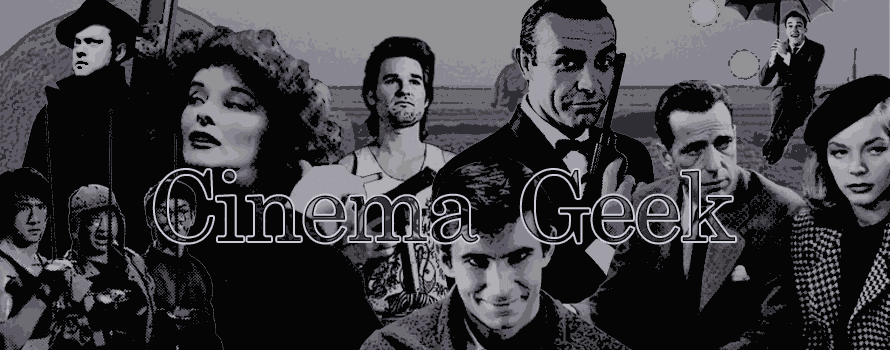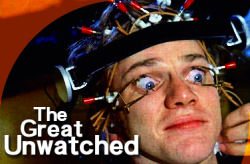Early in my viewing of Christopher Nolan's Inception, I wondered if it was a follow-up or high-tech remake of Nolan's debut film, Following. Beyond the confluence of two characters, both thieves, sharing a name (Cobb), there's also the idea of a voyeuristic practice (following random people / invading dreams) that has a number of rules that eventually get broken. Except it quickly became apparent that the voyeurism angle wasn't as much Nolan's concern anymore. Certainly, there's the sequence where Ariadne (Ellen Page) peeks in on Cobb (Leonardo DiCaprio) as he dreams of his past regrets, but it's an exception to the rule. For the most part, dreams in the film aren't the nest of uncontrolled memory and emotion, but conscious constructs formed by someone other than the dreamer, set to pull a specific response from the target. In Inception, dreams are movies.
In case you haven't seen the movie or aren't aware of the basic premise, Cobb works as an extractor. Supported by a team of fellow thieves, he performs corporate espionage by entering the dreams of his targets (CEOs and the like) to retrieve sensitive information. One failed mission turns up an unexpected benefit -- his intended mark offers him a job to plant an idea in the mind of a rival. Inception is nearly impossible, but Cobb accepts anyway, bringing Ariadne into the fold to design the multiple levels of dream needed to bring this job off.
Within the world of the film, dreams are created using the same system as movies (Cobb as director, Ariadne as writer, and various other members of the team working as actors, production managers, technicians, and moneymen). As in the movies, the most common dreams are the ones used to extract something from the audience/mark (emotion/information). More difficult are the dreams that inspire and create ideas.
Furthering the films-as-dream metaphor, each of the levels in the main dream resembles an action movie in its own right. First, there's a kidnapping caper, then a "who-can-you-trust" corporate thriller (that later turns rather Matrix-y), and finally a James Bond spy romp (complete with unusual modes of travel and guarded fortresses).
 |
| Cobb (Leonardo DiCaprio) and Ariadne (Ellen Page) explore the world of dreams in Christopher Nolan's Inception |
However, there's one quote that really encompasses my whole argument:
"You create the world of the dream. We bring the subject into that dream and fill it with their subconscious." -- Cobb to Ariadne on being a dream architect.
This has so many different layers of meaning when considering it in the context of film.
First, of course, there's the purely physical reality of film, which is nothing more than a series of still images that, when played back at a certain speed, cause our brains to fill the gaps, creating the illusion of movement.
Second, there's the normal act of viewing anything. We naturally fill in what we cannot see. A close-up does not eradicate the rest of the actor. Similarly any other characters in the scene are still "there," even if they aren't visually apparent. Rooms have four walls even if we can only see three, and they definitely have ceilings.
Third, there's the artistic language of cinematography and editing that's been in development for the past 115 years. A low-angle shot of a character indicates power, a high-angle shot indicates worthlessness. A roving, bobbing camera probably puts us in a character's POV (an assumption that Friday the 13th exploited to create suspense). Cutting between two shots creates an association between them, chronologically or thematically or emotionally.
Fourth (and somewhat related to the second), the world of any given film, like the dreams in Inception, is naturally incomplete. Even if there was a movie that followed its protagonist every single second of the day in real-time from birth until death, we still wouldn't know details like what smells surround this person, what happens to the people in his or her life after they leave the frame, or what thoughts are running through his or her head. Filmmakers do their best to represent those details that are pertinent to the story or the characters, but they are limited by the format, especially the commercially-imposed average runtime of two hours. So, as an engaged audience, we fill in the details from our own experience, our own subconscious. Office buildings smell like this, a person in this situation would be thinking that, etc. Sometimes filmmakers invite us to engage on a more conscious level, like when Quentin Tarantino never shows us what's in the briefcase in Pulp Fiction. Nolan makes his own invitation with the very last shot of Inception.
Leaving that aside, though, we create our own stories. We debate character motivations and discuss sequel possibilities. We read relationships between characters that aren't explicitly stated. We write fanfiction to extend the story or to bring it more in line with our understanding of the world or to simply make it something we want it to be at the moment. Even if we never talk about it, though, on some level we all put part of ourselves into the movies we watch. It probably goes without saying that the more a film gives in terms of quality and craftsmanship, the more likely we are to become involved. That's just the nature of art.
Tune in later this week (after I see the movie again, probably) as I look at Inception's scarier areas of dreaming/cinema.























